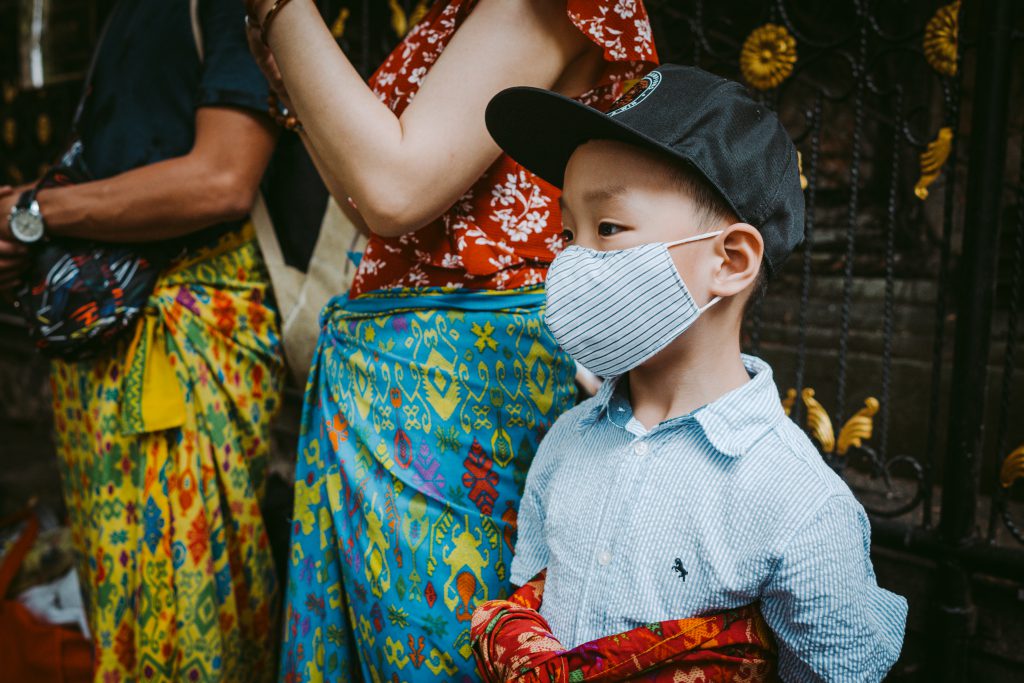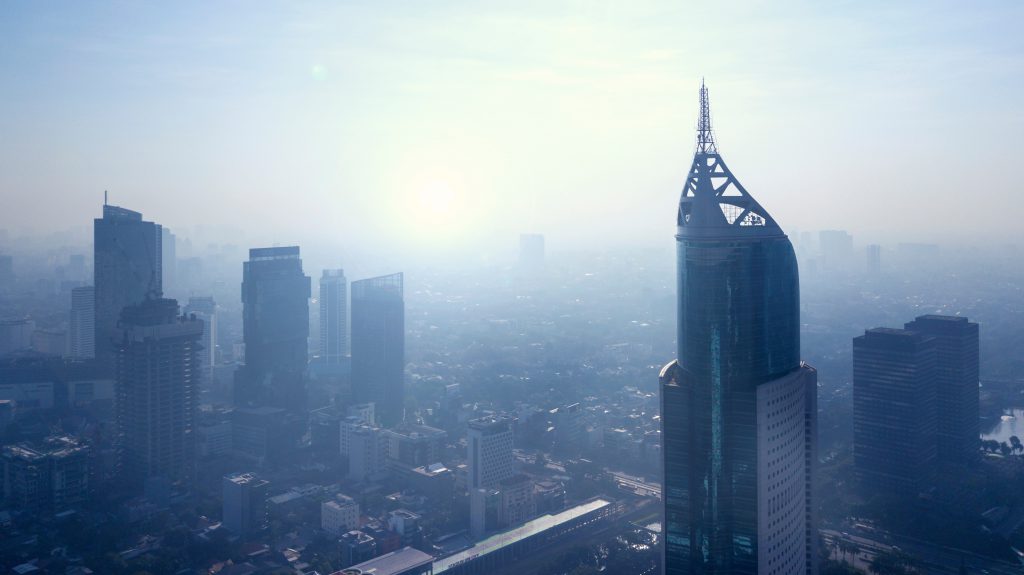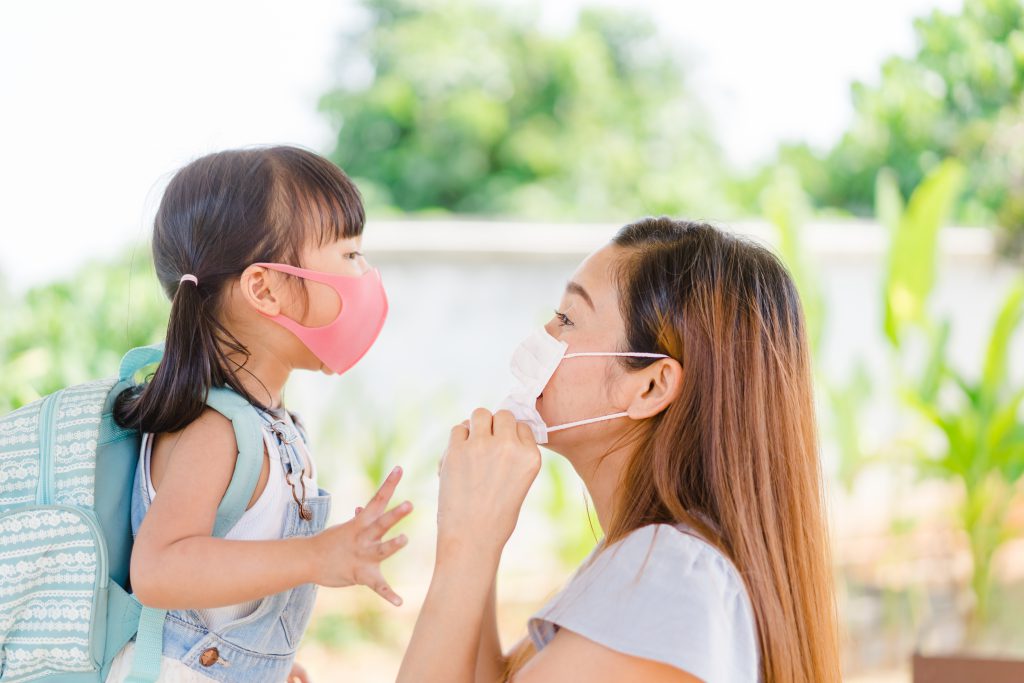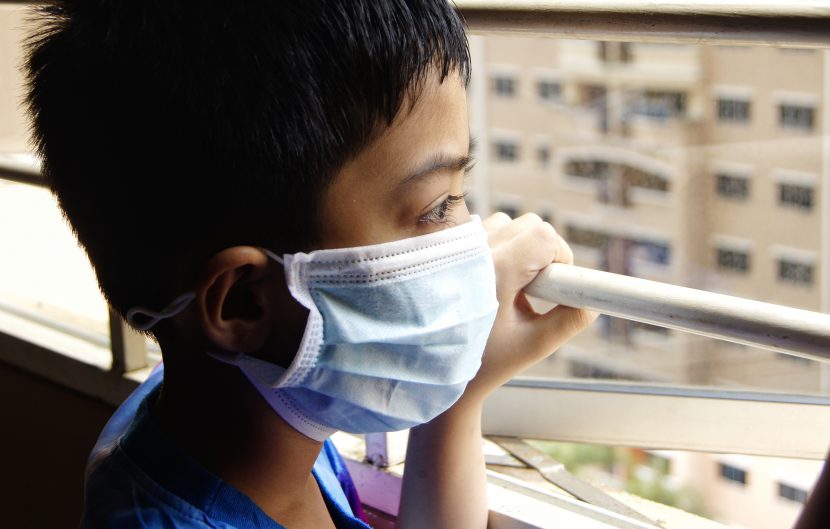Clean air is an environmental right and every child has the right to enjoy a safe, healthy and sustainable environment. Therefore, every country must protect the environmental rights of its citizens, and Indonesia is one of the countries that has formally accepted the environmental rights norms. However, since Indonesia, particularly Jakarta, records some of the highest figures of air pollution, the aim of this article is to reveal the effects of air pollution in Indonesia in relation to children’s rights.
Air Quality as a Right Ensured by the Children’s Rights Convention
Children suffer the most from air pollution, as they are considered to be in the category of vulnerable groups. Poor air quality causes a domino effect which effectively violates numerous rights under the Children’s Rights Convention 1989.

- Article 6: “Every child has the right to life. Governments must do all they can to ensure that children survive and develop to their full potential.” (UNICEF, 2020) Poor air quality can have severe consequences for children in developing and realizing their full potential. (Humanium , 2020)
- Article 24: “Every child has the right to the best possible health. Governments must provide good quality health care, clean water, nutritious food, and a clean environment and education on health and well-being so that children can stay healthy.” (UNICEF, 2020) Constant unhealthy levels of air pollution can cause respiratory conditions such as asthma, pneumonia and bronchitis, among others. If left untreated, some health complications related to air pollution can last a lifetime. Furthermore, research has shown that babies born to mothers exposed to high levels of pollution during pregnancy are more likely to experience reduced growth while in the uterus, low birth weight, and be delivered preterm. (UNICEF, 2019)
- Article 27: “Every child has the right to a standard of living that is good enough to meet their physical and social needs and support their development.” (UNICEF, 2020) Air pollution can impair children’s development and accessibility to a good standard of living, this being closely linked to the right to a clean healthy environment which children are unable to enjoy.
- Article 28: “Every child has the right to an education. Primary education must be free and different forms of secondary education must be available to every child.” (UNICEF, 2020) According to the Ministry of Education and Culture of Indonesia, more than 46,000 schools are currently affected by poor air quality, impacting more than 7.8 million students. Many schools have had to close in the most affected areas, depriving children of learning opportunities. (UNICEF, 2019)
- Article 31: “Every child has the right to relax, play and take part in a wide range of cultural and artistic activities.” (UNICEF, 2020) Children’s right to play is crucial in their healthy development and adequate learning experience. In other words, children should be ensured with a safe environment to engage in playing activities outside, which is many times jeopardized by air pollution.
Air Pollution in Relation to Sustainable Development Goals (SDGs)
Reducing air pollution is also strongly correlated with the Sustainable Development Goals (hereinafter SDGs) since a child rights-based approach is key for the achievement of the SDGs. (Child Rights Connect, 2020)
- SDG 1: refers to ending poverty in all its forms everywhere, poverty denies children their fundamental rights to nutrition, health, water, education, protection and shelter. Reducing air pollution can help families become healthier, save on medical expenses and become more productive. (UNICEF, October 2016)
- SDG 3: refers to ensuring healthy lives and promoting well-being for all, at all ages. Reducing air pollution can translate to saving millions lives and lead to healthier, better lives for children and future generations. (UNICEF, October 2016)
- SDG 12: refers to responsible consumption and production. Children are the least responsible for environmental degradation, yet they will bear the greatest burden of its impact. Chemicals released into the air increase air pollution and contribute to harmful effects on human health. Responsible consumption and production could help reduce these harmful chemicals. (UNICEF, October 2016)
The Reality of the Situation in Indonesia
Indonesia signed and ratified the 1997 Kyoto Protocol, an international treaty which sets binding targets to limit and reduce greenhouse gases emissions. (UNFCCC, 2020) The 2015 Paris Agreement was also signed and ratified by Indonesia with the objective of strengthening the global response to the threat of climate change by keeping the global temperature below 2 degrees Celsius. (UNFCCC, 2020)
Indonesia is legally bound by the provisions of both treaties so the state must ensure it has effective national policies to reduce greenhouse gases. Such policies should ensure the air quality is not harmful towards its citizens and strive to protect the most vulnerable groups of its society. However, despite ratifying key international conventions, in practice Indonesia has struggled to ensure these environmental rights are protected. From 1998 to 2016, the country went from being one of the cleaner countries in the world to one of the twenty most polluted. The greatest spike happened a few years ago, from 2013 to 2016, when air pollution levels doubled due to intense fires. (Claire, March 2019)

Consequently, an average Indonesian can expect to lose 1.2 years of life expectancy at the current pollution levels, according to the Air Quality Life Index (hereinafter AQLI) because air quality fails to meet the World Health Organisation (hereinafter WHO) guidelines. (Claire, March 2019) In September 2019, it was reported that parts of Indonesia recorded levels of 155 on the Air Quality Index. According to the Index, anything between 151 and 200 is unhealthy. This means that everyone in the area is likely to begin to experience health effects and members of sensitive groups and young children are made particularly vulnerable. (Neill, 2019)
A contributing factor to poor air quality are forest fires which are common in Indonesia during the dry season. However, in 2019 the situation became worse because of an extended drought season and the impacts of climate change. (Neill, 2019)
Moreover, UNICEF noted that small children are especially vulnerable to air pollution because they breathe more rapidly, and their physical defence and immunity systems are not fully developed. It is estimated that 2.4 million children under the age of five live in the areas most affected by haze and wildfires which have been occurring in Indonesia since July 2019. (UNICEF, 2019)
“Poor air quality is a severe and growing challenge for Indonesia,” said Debora Comini, UNICEF Representative. “Every year, millions of children are breathing toxic air that threatens their health and causes them to miss school – resulting in lifelong physical and cognitive damage.” (UNICEF, 2019)
What Can We Do To Reduce Air Pollution for Children?
Reducing air pollution is one of the most important things we can do for children. Research shows that reductions in air pollution have led to improvements in children’s respiratory functions. A WHO study estimates that meeting global air quality guidelines could prevent 2.1 million deaths across all age groups per year based on 2010 data. (UNICEF, October 2016)
Moreover, reducing air pollution could also improve the overall health of millions more, help to reduce the incidence of acute and chronic respiratory infections among children, and reduce complications during pregnancy and childbirth. (UNICEF, October 2016) It could also improve children’s physical and cognitive development, helping them to lead longer and more productive lives. (UNICEF, October 2016)
The case of Indonesia has shown that pollution has a negative impact on the entire society, especially on the youngest and the most vulnerable among us. We must urge our governments to develop policies aimed at reducing air pollution for the safety of every member of our society, especially the children.

At Humanium, we strive to raise the importance of children’s rights to a healthy and safe environment and the significant role that good air quality can have on their healthy and productive development. Join us in making children’s rights to a safe environment a reality by sponsoring a child, making a donation or becoming a volunteer! Only with their right to a healthy environment ensured can children have a progressive and sustainable future ahead!
Written by Igi Nderi
References
Claire, M. G. (March 2019). Indonesia’s Worsening Air Quality and its Impact on Life Expectancy. Chicago: Air Quality Life Index.
Humanium . (2020, April 8). Right to Life. Opgehaald van Humanium.
UNFCCC. (2020, April 13). What is the Kyoto Protocol? Retrieved from United Nations Climate Change.
UNFCCC. (2020, April 13). What is the Paris Agreement? Retrieved from United Nations Climate Change.
UNICEF. (October 2016). Clear the air for children Executive Summary. New York: UNICEF.


